As the first green grass of the year works its way through last summer’s vegetation, bears come out of their torpid semi-hibernation and start to move and feed. They have had a long winter, some going into their dens as early as November, and they need to consume some calories. In the canyons of Montana, Idaho, and Oregon there are two ways to access the country, from the top or the bottom. Often times, snow prevents access from the top until later in the season and the only way to access the bottom is by boat.
There are pro’s and con’s to hunting spring bear from a river. You know how bird hunters say the reason they do it is for their dog? The reason I hunt from a river is for the river, not because it’s the more effective way to hunt, because it isn’t. Everywhere you can hike is going to be straight up, and thermals start rising in these river canyons very early in the day and don’t start coming back down until dark. Wind and gravity are against you, and bears have an almost unmatched ability to smell. Many spring bear hunters try hunting from the river exactly one time, realize the climb into bear habitat isn’t for soft feet and and winter weight and decide to wait for snow to allow road or foot access from above. If you decide you want to hunt from the bottom up, here are the tips you need to make it work.

The waterway and regulations often dictate the type of craft you can use. The lightest is the packraft. I use one from Alpacka Rafts that weighs under 10lbs with the kayak paddle. I can fit myself and a VERY close friend on it for ferries across a river, or my normal expeditionary hunting kit if I am going to use it to float a long section of river. A packraft can handle whitewater decently if rigged and handled correctly.
The next option is a drift boat or larger raft. I have rowed approximately 19.7 million oar strokes in each. A raft is more forgiving in rocks and rapids and can haul more gear. A drift boat is sexier and more maneuverable in whitewater. In either case look for something in the 16’ range.

Stepping up, your next choice is going to be a power boat, probably with a jet drive so you can run shallower water without damaging the boat and to prevent cavitation in whitewater. I use a custom 23’ cargo jet from Riddle Marine. It has a GM 6.0 400 hp engine, can carry a ton of weight (literally), and makes my heart go pitter patter every time I turn the key. If you have more financial sense than me and don’t own a jet boat, you can hire someone to drop you off and pick you up at a specified time and date. This option limits your maneuverability but can probably get you to a place with less hunting pressure than anywhere you can get with a pickup. The biggest advantage to a jet boat is the ability to move both up and downstream. The disadvantage is cost and the limited number of rivers you can run them on.
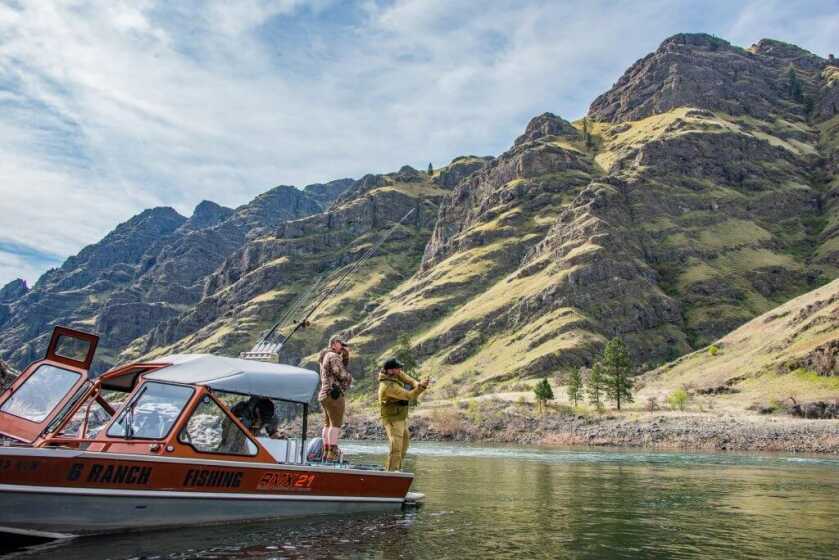
Boats are efficient ways to carry a lot of weight. The Law of Buoyancy states ‘the upward force on an object in water is equal to the weight of the water that it displaces’. Water weighs in at about 8lbs per gallon, so that displacement force is truly amazing. All that to say you can bring a pretty nice camp with you.

On my jet boat camps I usually bring a Traeger grill that I run off an RV battery with an inverter, a propane range, griddle, dutch ovens, about 300 quarts worth of yeti coolers, a couple tables, chairs for everyone, a nice cot and large tipi… it is luxurious. I enjoy cooking gourmet meals at camp. Three courses for every dinner. Steaks, salmon, dutch oven pizza, berry cobbler, cinnamon rolls, bacon and sausage, french press Black Rifle.. you get the idea. The problem with running a really nice camp is that you and your buddies won’t want to leave and the bears get a free pass. Not all bad.
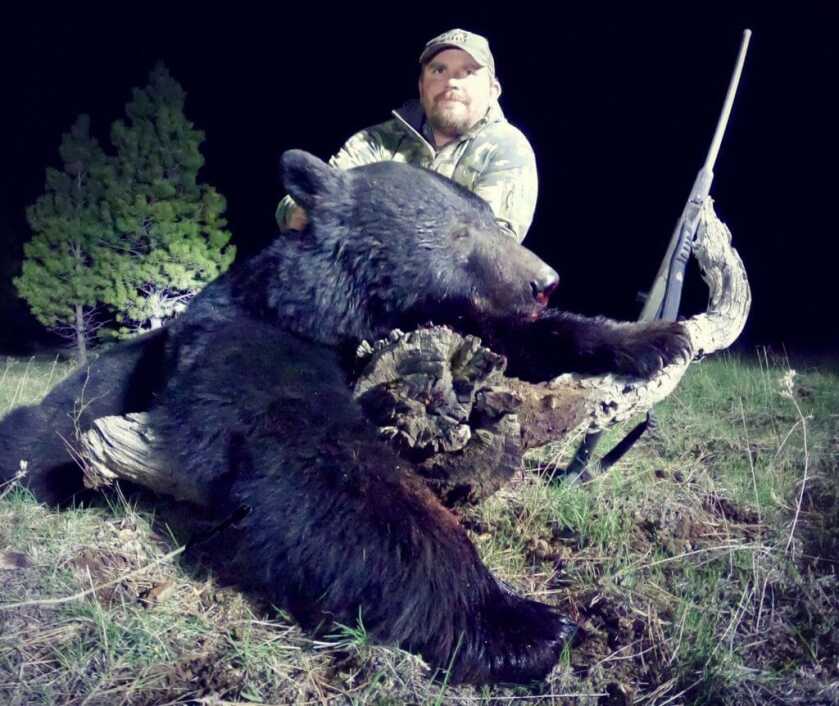
I also bring a spike kit with me. I want to be able to spend a night on the mountain, it may take an entire day to climb the thousands of vertical feet needed to get to a place a self-respecting bear might be, and if you spend 7-8 hours climbing and sweating off girl scout cookies, you won’t want to turn around and hike all the way back just because it’s ribeye night at basecamp. My spike kit includes a Viam Outdoors tipi, Kifaru sleeping bag, Nemo foam pad, two liters of water, fruit snacks, a couple freeze dried meals plus hunting gear. Don’t overpack for a single night out.
Bears can’t eat meat straight out of the den— their digestive system can’t handle it. They spend their first couple weeks eating fresh grass, buds on various shrubs, wild onions, and petals on arrow leaf balsam root. Look for that good green up about 750’ below the snowline. Pay attention to places adjacent to dark timber that bears can move in and out of.
Your first move is not to hike to where you hope to shoot a bear. You hike to where you can glass a lot of country. Let your glass do the walking. Get comfortable. Be efficient and stay vigilant. Bears can be active at any time of day in the spring. First use a pair of 10x binos to familiarize yourself with the terrain and start making assumptions about where bears might come out. Then shift to some 15 or 16 power binos and look at all the bear gremlins that are out there. Since bears can be blonde, chocolate, black, cinnamon and even gray, there is never a shortage of stumps and rocks that look especially bear like. If you are glassing with a friend do not say “there’s a bear” until you are very sure of what you are looking at. I typically charge my buddies $1 for every MIG (misidentified game). I often suffer those fines myself. I also have a spotting scope on a tripod setup every time I glass. I use tripod heads that I can mount my rifle to shoot from if needed. I’ve used arca style heads on Two Vets Sporting Goods tripods as well as Spartan. Both have their place, although its easier to glass and get Tacticam footage from the larger ball heads on the Two Vets. The Spartan tripod legs double as trekking poles which is pretty handy. The spotting scope makes its money by letting you zoom in close and see if the bear you are looking at is big enough, and to see if there are cubs around. I’ve watched a bear for an hour before seeing cubs come tumbling out from behind a log. Identifying boars vs sows and judging bear size at distance is very challenging. If you are within rifle range and your scope has an MOA or Mil reticle you can use it to measure the length of the bear. I’ve found this to be the surest way of knowing a bear’s size. If I could only bring one optic it would be the Zulu6 16x stabilized binoculars from Sig Sauer. You don’t need a tripod and glassing efficiency is incredible.
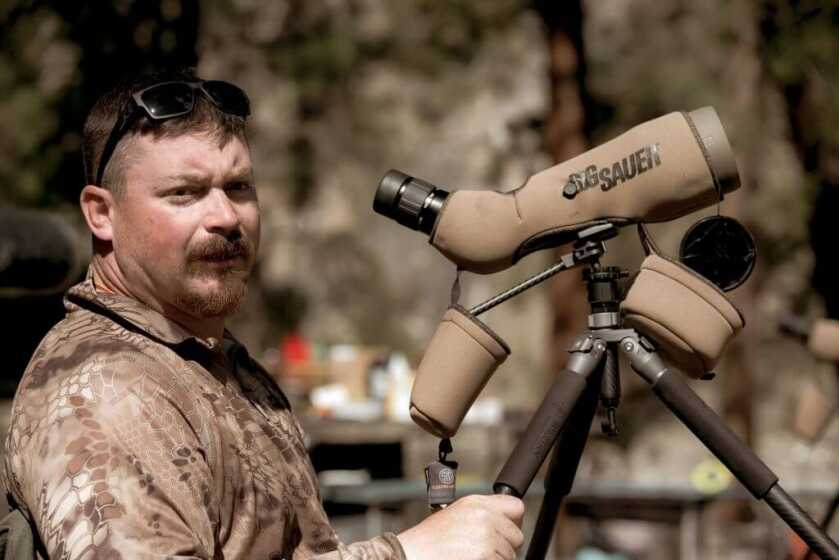
Black bears are not especially tough animals and they have very thin skin. When it comes to rifles you need accuracy more than anything else. I’ve shot them with everything between a 243 and a 338 with similar results. I favor a gun that is tough and portable.
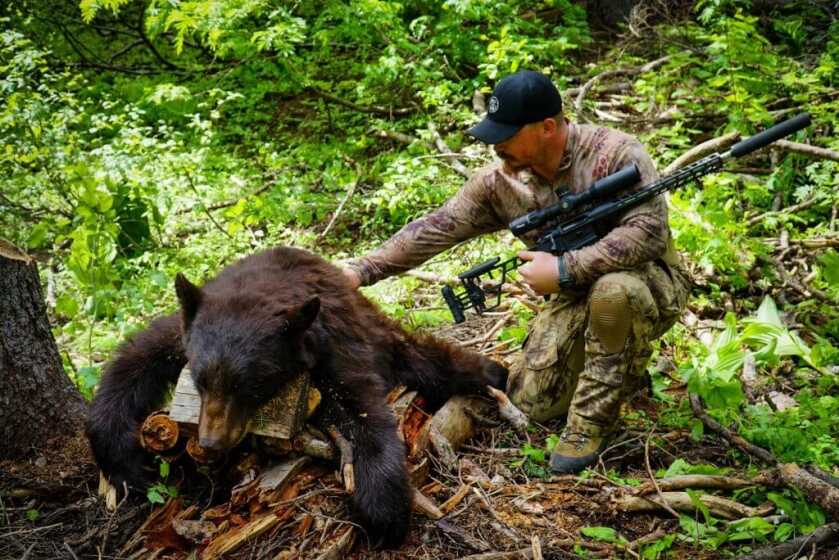
Once you have a bear spotted you simply have to move into position and take the shot. It’s worth your time to study bear anatomy because the shot placement is not the same as it is on a deer or an elk. Spring days can be warm, so once your bear is down, time is against you. Get that hide off and meat hanging in the shade as soon as possible. Once back at base camp, get the meat on ice if you have it. If you don’t have ice, first thing in the morning when the meat is at its coldest, wrap it in your sleeping bag and keep it in the shade— this will act as a cooler for you. If your hunt is going for several more days you’ll need to flesh the hide, remove the bones from the paws, remove the skull and salt the hide. You need about 1lb of salt for every pound of hide. I use a fine livestock salt that sells for around $12 for a 50lb bag. Place a stick in the bear’s jaws so rigor mortis doesn’t prevent a biologist from being able to extract a tooth when you check your bear in.
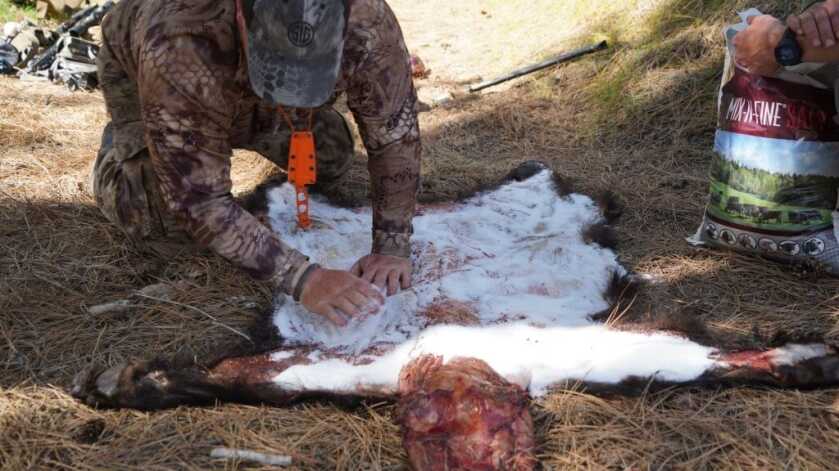
Navigating rivers is treacherous. People wreck boats and drown every year, many of them very experienced. If you don’t know how to run the boat, don’t try to run the river. If you don’t know how to run the river, get advice from someone who does and scout every major rapid and obstacle. Yes, it slows you down, but it also keeps you alive. When I guided whitewater there were some rapids I’d run dozens of times in a season, and I still scouted them every time. Rocks can move, logs can get jammed against rocks, and flows change dramatically. Coming home safe is more important than going fast.



Love this read, packed with information. I learnt lots and it makes me want to give this a go!